If mistakes were made during the construction of the building, this could cause a violation of the waterproofing, which leads to the destruction of the foundation and the structure itself. To date, new technologies are known, with the help of which it is possible to solve these problems qualitatively and quickly. However, you should be prepared for the fact that not all of them are available for home use, because, for example, the injection method requires the use of pumping equipment.
Waterproofing is an effective method of protection against exposure to moisture. It allows you to treat leaks, which can be pressure. The principle of the method is to inject high pressure with the help of pumping equipment, which is intended for this purpose.
Need to use injection waterproofing
The foundation serves as the foundation of any building. Its quality depends on the life of the house. For this reason, the the initial phase It is important to approach the waterproofing of the foundation as seriously as possible. These manipulations can protect the house from groundwater and rainwater, making it as resistant to corrosion as possible.
One of the possible options for protecting the foundation during the operation phase, as mentioned above, is the injection waterproofing. If a capillary rise occurs between the wall and the foundation groundwater, then the space begins to fill with moisture. Capillary moisture is able to saturate the structure at 10 m in height, which is harmful also because the water can be saturated with acids and aggressive salts.
When operating a building, it is important to monitor its condition, ensuring reliable waterproofing of concrete underground structures. Such control can be difficult to implement because of the inaccessibility of waterproofing, because it is hidden by massive elements, backfill, etc. In this case, it is effective to use waterproofing materials that have a penetrating effect.
Description of injection waterproofing
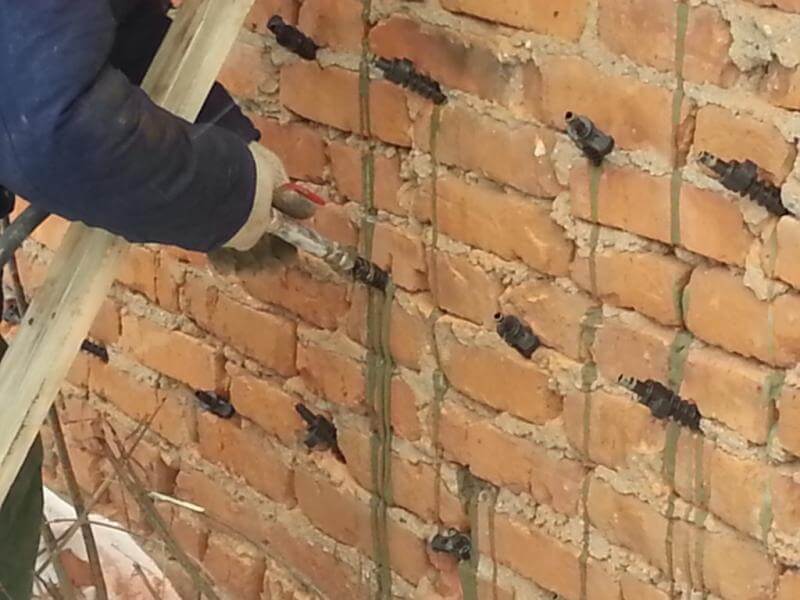
Waterproofing injection allows the building not to lose its strength due to the fact that the structures are maintained in dry form, the reinforcement is passivated, initiation of corrosion processes occurs at a lowered pH level. There are several ways to stop corrosion of the armature, among them, it is necessary to distinguish the cleaning and coating with special compounds. Solve the problem by changing the operating conditions.
It is physically impossible to clean the reinforcement, because it is encased in concrete. It remains possible only one option to increase the level of pH for a long time, because corrosion will be renewed with the infiltration of moisture. Waterproofing injection protects the structure from the effects of water. The principle of operation of substances is very simple: they penetrate into the upper porous layer and fill the pores, displacing the liquid.
Additional Features
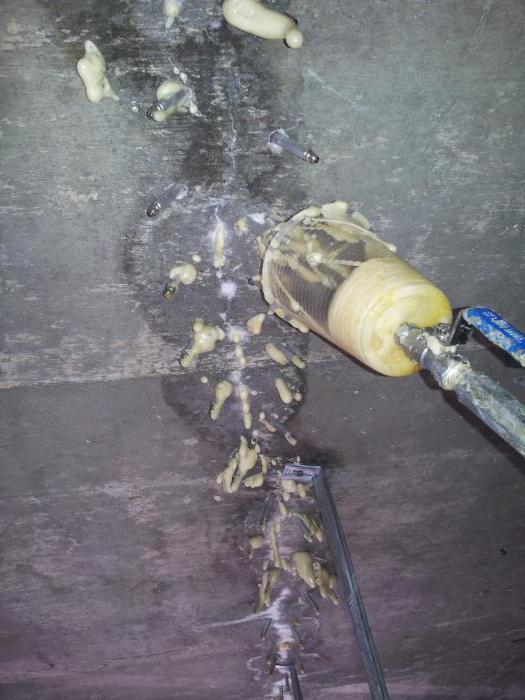
If any component is added to the solution, it is possible to achieve properties, among which:
- fighting with fungus and mold;
- increase chemical stability of the structure;
- restoring technical properties old materials;
- the elimination of the risk of new corrosion on the valve.
Feedback on injection waterproofing
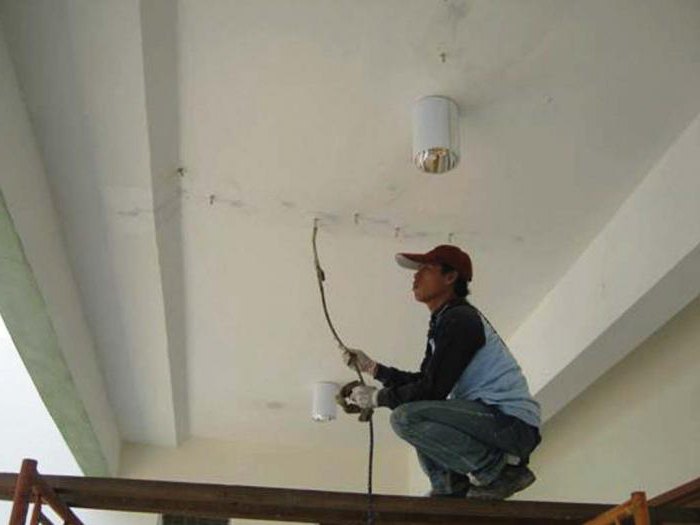
According to consumers, the main advantage of injection waterproofing is its durability. The materials have excellent technical qualities, they are able to protect the structures from moisture, corrosion and temperature changes, keeping the heat in the building. Work is often carried out using liquid rubber or water glass. According to customers, each of these materials has its own advantages, for example, liquid rubber is flexible and highly elastic. It is simply applied, it is environmentally safe and has high adhesion.
Liquid rubber, in the opinion of home masters and specialists, is quite easy to repair. Special skills to use this material will not be required.
Features of liquid glass
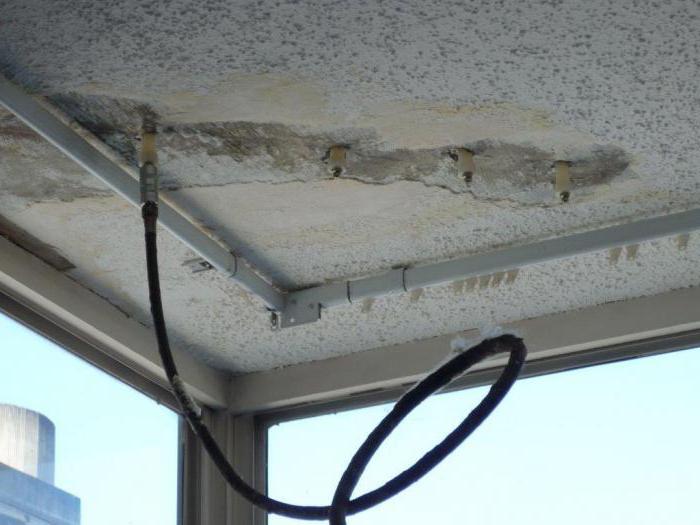
Liquid glass is also quite common for injections. It is able to protect buildings from exposure:
- the sun;
- corrosion;
- wind;
- temperature.
According to users, liquid glass has one important drawback, which is expressed in the fragility of the material. He is ready to serve for only 5 years.
Reviews about different materials for injection waterproofing
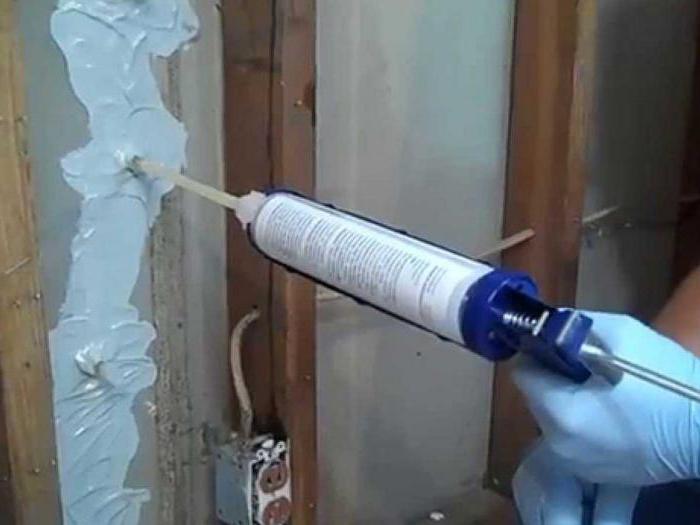
Injection waterproofing can be carried out using different materials, among them it should be noted:
- epoxy products;
- micro cement;
- polyurethane materials;
- acrylate gels.
According to consumers, polyurethane materials and acrylate gels are the most effective. They have a high plasticity, and with non-uniform loads do not collapse. The formulations are hydro-reactive, this indicates that they polymerize under the influence of water. As for acrylate gels, their density is almost the same as the density of water. In the soil and the material of the construction, they quickly solidify, forming a strong bond.
Consumers like that these solutions allow you to control the polymerization reaction time. This helps to block access to water streams penetrating underground structures. Provide protection from pressurized water can be in the walls of the structure and between the ground and walls. The material is able to strengthen the layers of soil, mixing with its particles, this allows you to get protection from washing out and stabilizes the soil of the building.
If you will be injected waterproofing the basement, then you should pay attention to polyurethane polymers. According to consumers, they are among the most economical. This is due to the fact that when exposed to moisture, the volume of material increases by 20 times. This property is especially important in the installation of waterproofing in conditions of loose soils and quicksands.
The material starts foaming and displaces the water when it comes into contact with moisture. When applying the next portion of waterproofing in the absence of water, it hardens without foaming and becomes a strong dense substance that forms an impermeable shell.
Alternative solutions

Quite often, buyers compare epoxy compounds with polyurethane mixtures and acrylic gels. The former polymerize in air, and if water is present, it can adversely affect the characteristics. But after solidification, the material exhibits the best waterproofing qualities, protecting the structure from moisture and giving it mechanical strength.
Injection waterproofing of the foundation is often carried out with the help of micro cement, which, according to consumers, penetrates well into cracks and voids, crystallizes and forms a protective barrier that does not allow moisture to pass through. In liquid form, the injectable formulation is within 15-40 minutes. The solidification can be controlled by the catalyst contained in the mixture.
Today, the term "injection waterproofing" can be understood as a very broad area waterproofing works.
And often there is a substitution of concepts or usual confusion.
The purpose of this article is not the ultimate truth, but our idea of this rather popular, at present, concept, which we want to convey to you, based on a concrete example: the availability of materials for injection waterproofing in the line of materials of the waterproofing system PENETRON.
To begin with, we will sort it out in terms that we ourselves do not allow the substitution of concepts or confusion.
Waterproofing - the sequence of activities with the use of special building materials, the purpose of which is to prevent contact with a particular building structure or to prevent the penetration of water into the building structure.
Types of waterproofing
Oakleychnaya waterproofing - waterproofing, which is carried out by gluing (adhering) waterproof coating on the surface of the protected structure.
An example is waterproofing using roll materials on bituminous basis, which adheres to the surface of the concrete structure with the help of melted bitumen or by bitumen glue (bituminous mastics).
Oble waterproofing, which is carried out by applying (coating) various compositions, bitumen, bitumen-polymer, polymer composition on the concrete surface, which after hardening form a waterproof coating. Examples are tar, bitumen and polymer bituminous mastics.
Plaster (or armor) waterproofing - waterproofing, which is carried out by applying to the concrete surface different materials on a cement base with various sealing additives, which form a dense waterproof cement "crust".
Membrane waterproofing - fastening to concrete surface thin rolls or sheets of different polymer compositions that form a waterproof film (membrane) on the concrete surface.
All of the above types of waterproofing combine the following disadvantages:
All of them form a waterproof coating on the concrete surface
With the exception of plasterproof waterproofing, they all require the installation of a protective coating against mechanical damage
In the case of mechanical damage or destruction of the integrity of the waterproofing layer created with their help, the concrete structure becomes defenseless for the action of water
To prevent contact or penetration of water into the concrete structure, all the above types of waterproofing can be used only during the construction phase, since they are applied only from the outside of the protected structure, forming a waterproofing coating on the concrete structure from the ground side (for underground structures) or water (for structures , which in contact with water)
When water penetrates into the room to restore the waterproofing of the above-mentioned species, complete excavation of the structure, the creation of a new waterproofing coating and the backfilling of the excavation are required.
Penetrating and injection waterproofing: buy and provide waterproofness of concrete
The following types of waterproofing fundamentally differ from those listed above, since they differently change the internal structure of the concrete structure, turning the concrete itself into a waterproof environment.
These types of waterproofing can be divided into the following categories:
Penetrating (penetrating) waterproofing:
The principle of the action of this waterproofing is determined by the special chemical composition of the waterproofing material of the penetrating action and by the method of "delivery" of these special chemical components to the concrete massif with subsequent changes in the structural composition, giving the structure a waterproof property.
The second name for this type of waterproofing is penetrative, not accidentally.
So this type of waterproofing began to be called by the name of the company, which 50 years ago was the first to produce waterproofing materials of penetrating action - PENETRON.
And when these materials began to gain more and more popularity every year, these materials, and then the type of waterproofing became known as "penetrating".
Injection, or injection waterproofing, the price of which, by the way, is quite low:
To perform waterproofing work on the technology of injection waterproofing requires special equipment, as opposed to penetrating waterproofing (when waterproofing material penetrating action "Penetron" penetrates into concrete as a result of physical processes, and waterproofness is given to concrete for the entire thickness of concrete as a result of chemical processes)
injection materials are injected into concrete under pressure by special pumps.
In addition, injection materials, in contrast to the penetrating material, are not chemically similar to concrete, usually these are polymer compounds that, because of their initial viscous flow, are called injection resins.
Since injection resins have a much higher viscosity than water, they can not fill the capillaries of concrete, so injection of concrete, as a rule, is a work on the waterproofing of cracks formed during operation.
Injection resin, for example, penetrates into cracks in the floor or walls, turns into a solid state, reliably waterproofing static cracks, that is, not subject to deformation.
But, often, cracks in concrete are formed in places where periodic deformations of concrete occur.
For cracks in such places, the time variation in the width of their opening is characteristic.
They are called dynamic, and for their waterproofing, an injection resin is used which, after falling into the floor or walls, forms an elastic filling of the fracture cavity, allowing waterproofing with a change in crack opening width.
If water flows from the crack, the cavity of which must be filled with injection material, then stop this leak before applying the waterproofing.
For this, injection into concrete is made so as to get into the crack as close as possible to the outside of the concrete structure.
In this case, an injection resin is used which is hydroactive, i. E. which, upon contact with water, begins to increase very rapidly in volume, filling the crack, thereby preventing water from entering. After the water ceases to flow, the cavity is filled with injection resin, which creates a durable waterproofing cavity.
Injection resins included in the line of materials of the PENETRON waterproofing system are effective materials for creating waterproofing of cracks that have arisen in the course of operation concrete structures by injection (injection) into concrete. You can buy an injection waterproofing from Penetron-Moscow.
What happens when the rules of waterproofing work are violated or not observed at all? The destruction of the foundation and other deformations are simply inevitable. Certainly, buy high-quality waterproofing - the duty of each developer, but if you have saved in time and the problem has appeared, it must be solved promptly and by the most reliable methods. Injection waterproofing, the technology of which recently appeared in the arsenal of builders, is super - effective method restore moisture protection and protect the structure from destruction.
8 reasons why injection waterproofing is considered technology # 1
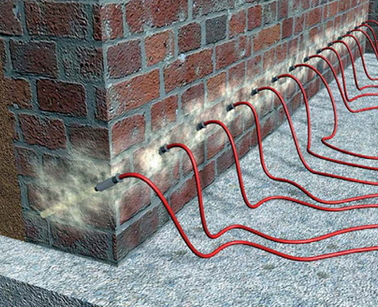 injection waterproofing foundation allows to get rid of the need to carry out major repair of the structure;
injection waterproofing foundation allows to get rid of the need to carry out major repair of the structure;The cost of injection waterproofing in comparison with waterproofing for swimming pools can be considered its only drawback. But correctly carried out injection waterproofing, you can buy materials for which with 15% discount in our company, it becomes the best solution - with its application for repair you can forget for decades!
How is the foundation waterproofing carried out?

Injection waterproofing, the technology of which consists in pumping polymer materials deep into damage, forms a highly elastic waterproof barrier, completely overlapping kinks, cracks, and other defects.
The best materials for injection waterproofing
 For injection waterproofing, four types of materials are used:
For injection waterproofing, four types of materials are used:
Injection waterproofing, the price of which is the most accessible to the consumer, is polyurethane. But in each individual case it is up to the expert to decide what kind of material to use.
Where without injection waterproofing is indispensable
The injection method is used to treat brick and concrete bases tunnels, stations, metro facilities, bridge supports, underground concrete tanks. Well recommended basement waterproofing , basement floors, foundations and underground garages.
Injection waterproofing is most effective in such cases:
- for waterproofing the nodes of the floor / wall junction;
- places of input of communications;
- elimination of pressure leaks;
- capillary cut-off for the exclusion of sowing by the foundation of soil moisture;
- waterproofing brick walls outside and inside;
- waterproofing of concrete structures;
- increasing the load-bearing capacity of dilapidated foundations of butane and brick.
Order an injection waterproofing facility and get a discount of up to 20% right now! Call us!
It's no secret that the foundation is the foundation of almost any building. On how well the basis is fulfilled, in many respects depends how long the building will last as a whole. It is for this reason that the issue of waterproofing the foundation should be approached as responsibly as possible. One of the options that can reliably protect water and moisture from the basement is penetrating waterproofing of the foundation. Otherwise it is called injection. This technology involves the use of exceptionally new materials and technologies.
If the waterproofing is not of sufficient quality, the groundwater level inevitably begins to rise at the capillary level between the wall and the base. The latter begin to fill gradually with moisture all the building elements. Since water usually includes a number of aggressive elements, including acids, salts, etc., a similar situation can be devastating for the building as a whole. And in this situation, the injection waterproofing of the cellar will be an excellent way out.
Injection allows building structures to maintain their strength for a long period of time. This is due to the fact that the structure is maintained in dry form.
Currently, penetrating waterproofing of the foundation is an excellent protection of concrete from water and moisture. Injection as a technology may involve the use of a variety of materials. But the principle remains unified in all cases. The waterproofing substance penetrates into the porous layer of the base of the building, fills all the existing pores and displaces the liquid.
Many manufacturers introduce additional components into the formulations through which the injection is made. This allows:
- increase the chemical resistance of the material;
- effectively fight mold;
- prevent the appearance of fungi;
- to restore the technical and operational characteristics of worn concrete;
- to prevent occurrence of corrosion processes.
Advantages of injection waterproofing
 Penetrating waterproofing of the base has a number of undoubted advantages. It is available in the form of solutions, has a high durability index and is able to protect the foundation, both from moisture and from a number of other negative effects. First of all, we are talking about corrosion and significant temperature differences. In addition, the injection waterproofing of the foundation perfectly preserves the heat inside the building.
Penetrating waterproofing of the base has a number of undoubted advantages. It is available in the form of solutions, has a high durability index and is able to protect the foundation, both from moisture and from a number of other negative effects. First of all, we are talking about corrosion and significant temperature differences. In addition, the injection waterproofing of the foundation perfectly preserves the heat inside the building.
Most often, the injection is done using materials such as liquid rubber or liquid glass.
Both options have their positive sides. So, liquid rubber differs flexibility and elasticity, it is easily put and represents an ecological product. In order to apply this material, no special skills and abilities are required. The most basic thing is to be able to create an even layer of waterproofing on the surface.
Liquid glass, which is a solution with the addition of sodium silicate and potassium, is also very easy to use. It is important to observe the necessary proportions in the process of mixing the composition into the concrete solution. Injection with liquid glass allows to protect the structure from moisture, sun, wind, corrosion and low temperatures. Choosing in favor of liquid glass as a material for waterproofing, it should be remembered that its properties persist for only 5 years. After this period of time, the procedure will need to be repeated
Stages of injection
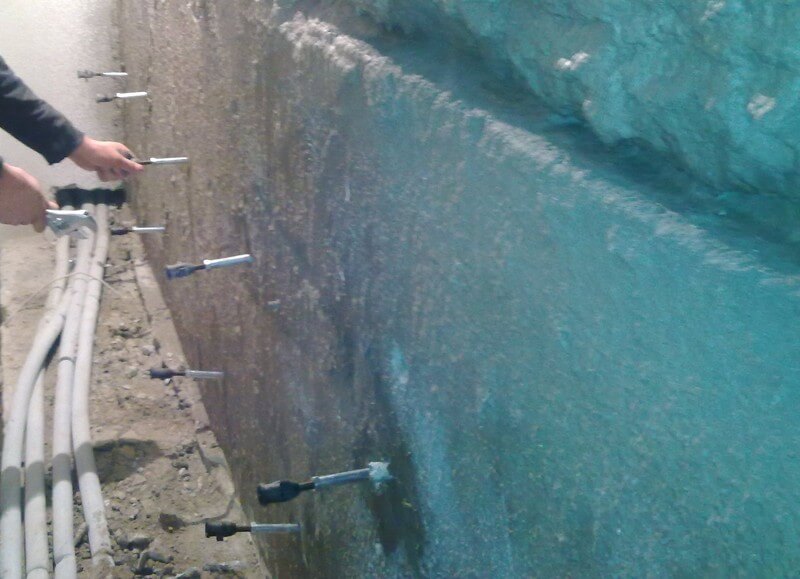 Injection of the foundation to create a high-quality waterproofing layer assumes the following stages of work:
Injection of the foundation to create a high-quality waterproofing layer assumes the following stages of work:
- drilling of the system by means of a perforator;
- injected with the help of specialized equipment for injection;
- neutralization of salts and destruction of fungi;
- with the help of metal brushes and other similar tools, the surface to be treated is cleaned of old plaster and paint applied to it;
- cleaned and scraped to a depth of at least 20 mm all the damaged joints;
- dust is thoroughly erased;
- in the staggered order and at an angle from 30 ° to 45 ° drilled holes (diameter from 25 to 32 cm);
- the holes are washed;
an injection is made by filling the hole several times, while the time of impregnation of each wall must be at least 24 hours. The material must be completely absorbed into the wall.
The service life of buildings depends on the waterproofing. Of all the damaging factors, water is the most dangerous.
There are many technologies to protect against moisture, new materials are being constantly developed.
In recent years, injection waterproofing has become increasingly popular.
The main advantages of liquid waterproofing
The main advantage of the method is its absolute reliability. Surfaces treated with hydrophobic materials are absolutely impermeable to water. Previously, when you could fix all the seams, joints and cracks, but the moisture still fell into the design through the pores. This problem is solved.
Injection waterproofing creates a waterproof coating. The composition impregnates all microcracks and pores, and then freezes and turns into an elastic membrane inside the building material. Due to its plasticity, it can withstand severe loads without loss of hydrophobicity.
Water repellent properties - that's not all. Specialists of the company "AronHydro" choose materials that not only provide ideal protection against moisture, but also strengthen the structure of building structures.
Injection waterproofing - new opportunities
- Freedom in choosing a season for work. The material is not afraid of low and high temperatures, it can be used at any time of the year.
- Possibility of local waterproofing. The composition can be used in a limited area, only where you need a particularly careful protection against moisture.
- Uniform monolithic coating. Waterproofing layer is obtained without seams and joints. Given the quality of surface treatment, there is no risk of leakage for many years.
- Ecological compatibility. The formulations are completely safe. They are suitable for the treatment of swimming pools and reservoirs with drinking water.
What should I consider when ordering an injection?
Injection waterproofing is one of the most progressive and reliable methods. However, comparing it with others, you will note two features that can be called disadvantages, but ...
- slightly higher than other methods of protection from moisture. This is due to the high cost of materials and equipment for work. On the other hand, if you really want to once make a waterproofing and forget about it forever, you should pay.
- Complex technology is a minus. It is unlikely that the owner of the premises will be able to perform the work independently. Injection waterproofing should be handled only by professionals.
Waterproofing technology: why you should turn to the pros
In theory, the process of waterproofing looks simple and straightforward:
- The bases are prepared, cleaned, dedusted, marked by injection sites.
- By marks drilled building materials at the right angle.
- Insert the nozzles and pour the waterproofing compound into the holes under pressure.
- When all the holes are filled with material, it remains only to wait for drying and finish the finish.
In practice, it turns out that when the work is done independently, the problems begin already at the design stage, since it is necessary to correctly calculate the waterproofing schemes and, if necessary, correct them in time.
Filling holes is almost blind, therefore, only a highly qualified specialist who knows the structure and properties of the processed building materials should do this.
The company "AronHydro" offers a real waterproofing made by real professionals. We are designing and performing waterproofing of any complexity. Call us and an experienced engineer at your facility to inspect it and discuss the details of the order!
